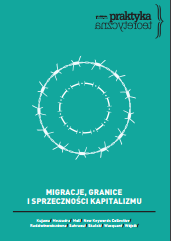Zwięzła genealogia i anatomia habitusu
A Concise Genealogy and Anatomy of Habitus
Author(s): Loďc WacquantContributor(s): Tomasz Warczok (Translator)
Subject(s): Sociology, Structuralism and Post-Structuralism
Published by: Uniwersytet Adama Mickiewicza
Keywords: habitus; Bourdieu; embodiment; schemata; disjuncture; historicization; philosophy of consciousness;
Summary/Abstract: Retracing the philosophical origins and initial usage of habitus by Bourdieu to account for the historical disjuncture wrought by the Algerian war of national liberation and the postwar modernization of the French countryside allows us to clear up four recurrent misunderstandings about the concept: (1) habitus is never the replica of a single social structure but a dynamic, multiscalar, and multilayered set of schemata subject to ‘permanent revision’ in practice; (2) habitus is not necessarily coherent and unified but displays varying degrees of integration and tension; (3) because it is not always congruent with the cosmos in which it evolves, habitus is suited to analysing crisis and change no less than cohesion and perpetuation; but (4) it is not a self-sufficient mechanism for the generation of action: the dissection of dispositions must always proceed in close connection with the mapping of the system of positions that alternately excite, suppress, or redirect the socially constituted capacities and inclinations of the agent. Crucially, in Bourdieu’s hands, habitus is not an abstract concept issued from and aimed at theoretical disquisition, but a stenographic manner of designating a research posture that puts the genetic mode of thinking at the heart of social analysis.
Journal: Praktyka teoretyczna
- Issue Year: 2016
- Issue No: 21
- Page Range: 163-173
- Page Count: 11
- Language: Polish

